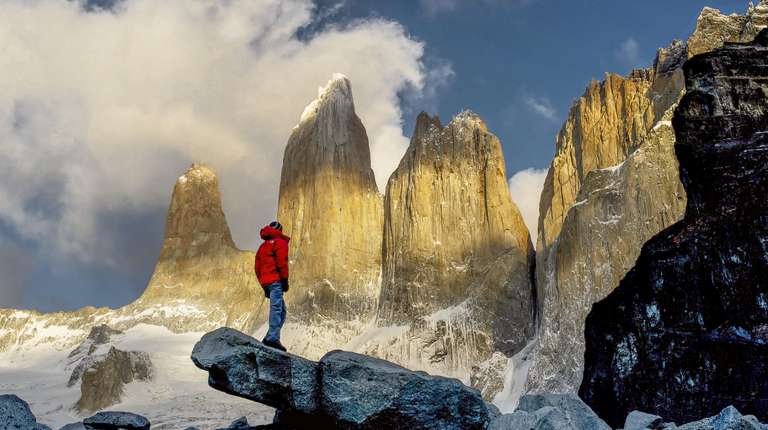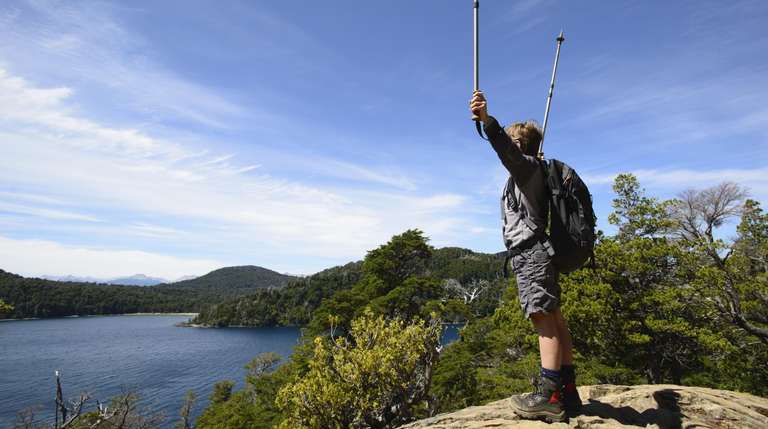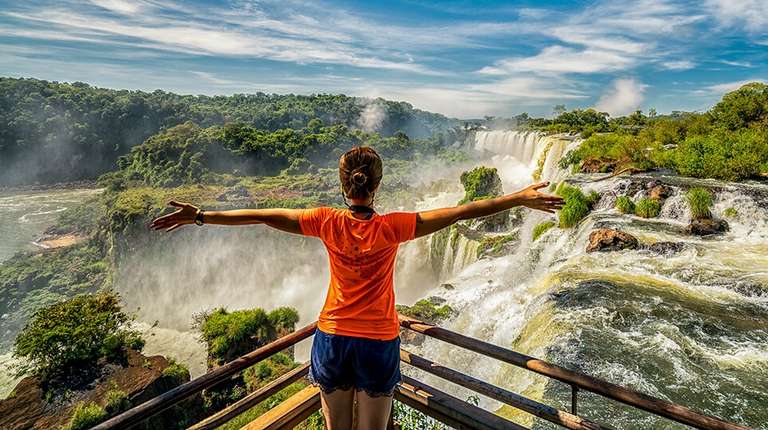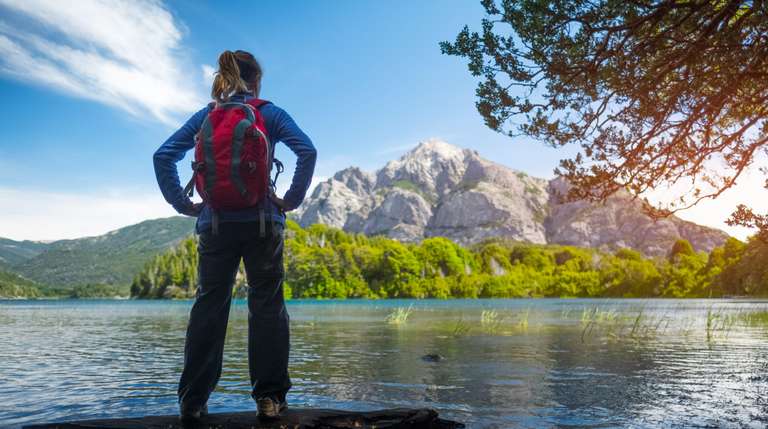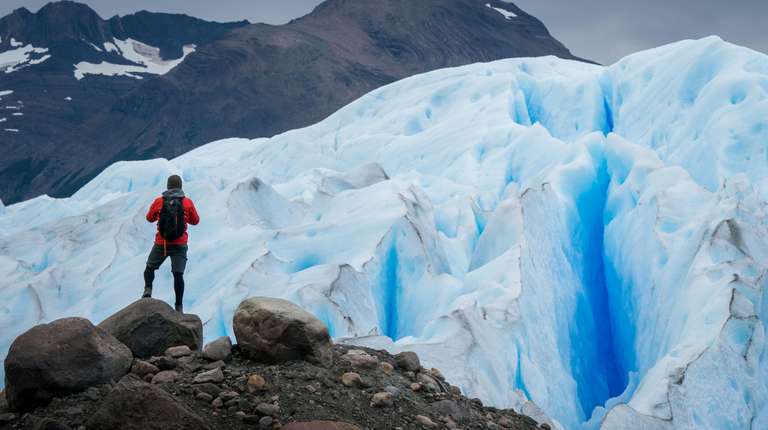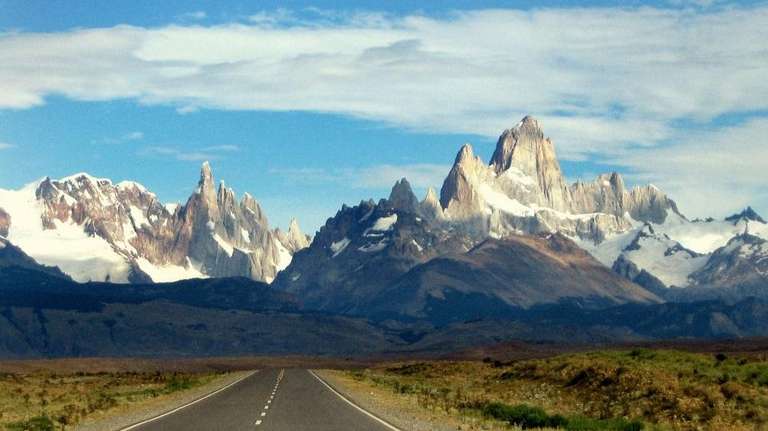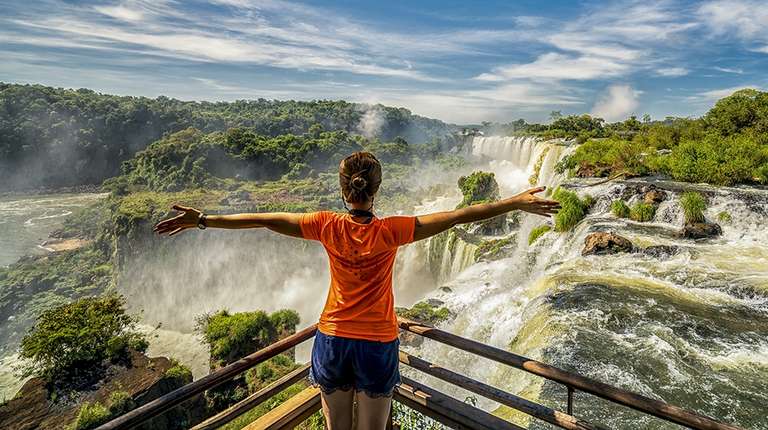How to plan a Patagonia trip?

- Eimear O
- From
- Eimear O
- From
- Julio
- From
- Vanessa J
- From
Why go on a trip to Patagonia?
For outdoor lovers, a Patagonia holiday is the most attractive trip you can take. It’s got every kind of landscape imaginable — deserts, grasslands, massive glacier fields, and the world’s longest mountain range. There aren’t many places in the world as diverse as Patagonia, and offers different things to see and do. If you are planning a trip to Chile or a vacation in Argentina, you cannot miss out Patagonia.
Highlights of Patagonia in Chile
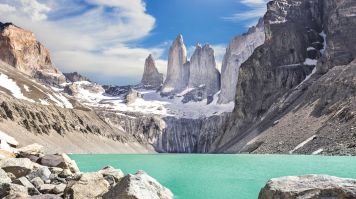

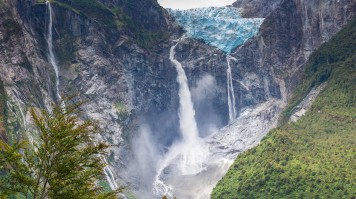

- A trip to Torres del Paine National Park offers arguably the most breathtaking treks in Chilean Patagonia (W Trek, O Circuit and the lesser known Q Circuit) with some of South America’s most iconic sights.
- Cape Horn/Hornos Island is one of the deadliest ship passages in the world and the place where the Atlantic and the Pacific Oceans meet can be toured via a multi-day boat excursion.
- Isla Magdalena is home to over 120,000 Magellanic penguins.
- Tierra del Fuego is the famous triangular archipelago famed for its emerald waters, mountains and valleys.
- With its remote feel and diverse landscapes, province of Aysen is a gorgeous combination of glaciers, mountains, rivers, and a temperate rainforest. Be sure to spend a night or two in Coyhaique, a charming and authentic town with gorgeous
scenery. - Strap on your crampons and embark on multi-day treks around the world’s third largest ice sheet outside of Antarctica — Northern Patagonian Ice Field!
Highlights of Patagonia in Argentina
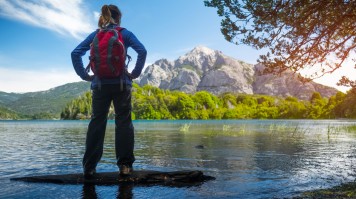
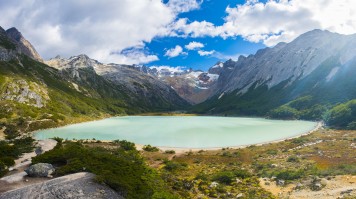


- A trip to Bariloche is dream come true for lovers of viewpoints and vistas. The village in the Argentina Lake District is a must visit for picturesque outdoor scenery, excellent cuisine, and mountain resort lounging.
- Hikes in Mount Fitz Roy, the highest peak in Los Glaciares National Park, avails stellar views.
- Perito Moreno Glacier is one of Patagonia’s most stunning glaciers, and — unlike 95% of the other glaciers in the world — this one is still growing!
- Punta Tombo’s trekking trails allow visitors to witness the habitats and mating grounds of roughly half a million migrating Magellanic penguins.
- Cave of the Hands (Cueva de las Manos) is a mysterious Patagonian cave displaying ancient cave wall art from a hunter-gatherer society thought to date back to 10,000 BC.
- Ushuaia tour, opens the gates to Tierra del Fuego National Park as well as Beagle Channel cruises, Isla Martillo (Penguin Colony site), and possibilties for Antarctica cruises.
You can visit Patagonia at pretty much anytime, depending on what you want to see or do. However, the best time for a Patagonia trip is between October and February. The weather is the mildest during this time and the region sees the least amount of rain. If you want to beat the high season crowds and prices, the shoulder months of March – May are also a good choice. In-depth information is available in our guide on best time to visit Patagonia.
Ideal duration for a Patagonia holiday
There’s so much to see and do in this massive region that you could probably spend months here and still be left craving for more. However, it is likely not feasible.
Therefore, the ideal duration for a Patagonia holiday is between 10 – 14 days if you want to hit as many highlights as possible in both Argentina and Chile. There may be some long-haul travel days as some of the highlights are on opposite ends of the region, so careful planning is required to ensure you don’t spend the majority of your time inside a vehicle.
Ideal budget for a Patagonia vacation
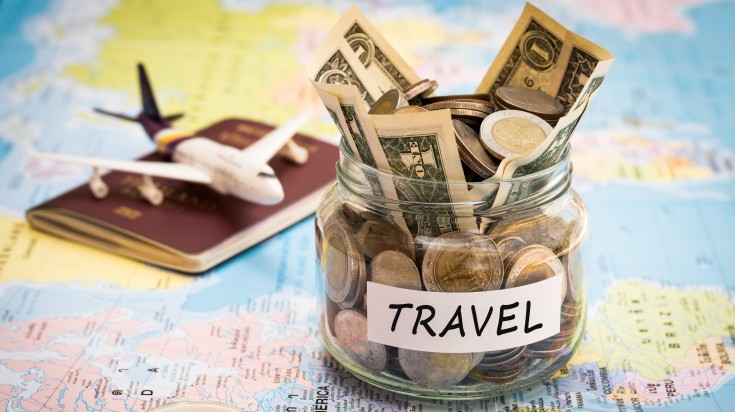
Patagonia is not the cheapest place in the world to travel. Our Travel Expert in Argentina, Say Hueque recommends to lock down a budget between USD 1400 – 1700 per person for accommodations and hot meals in Patagonia for a 14 day trip. According to them, “Travelers have to estimate at least USD 1000 per person for accommodation in a B&B for the 14 day period. And a simple meal (without wine) at a decent eatery would start at USD 20 per person.”
You can build the rest of your trip around this budget, which would include transportation, excursions and activities. Eventually, the final amount of your trip will heavily depend on what you want to do and see on the trip.
How to get to Patagonia
Because of its massive size, flying is definitely the most convenient way to travel in, out, and around Patagonia. The other option is to take a bus, but you’ll end up spending a lot of time on the road and less time in your destination. If your budget allows, fly as much as possible to give yourself more time to enjoy what you came for.
- Santiago to Chilean Patagonia
Chilean Patagonia is very spread out, so flying is the best way to get around. From Santiago, there are several airports you can use to access Chilean Patagonia. LAN and Sky Airlines offer daily flights from Santiago (SCL) to Puntas Arenas (PUQ), Puerto Montt (PMT), and Balmaceda (BBA). Traveling to these three hubs will grant you easy access to all the Chilean highlights listed above.
If you plan on taking land transportation, there are plenty of options available for that too. While renting a car is viable, it is not advisable if you are not well accustomed with the country. Bus journeys are possible, but a trip from Santiago to Chilean Patagonia can take anywhere from 12 to 24 hours. From the Santiago Terminal Sur, you can hop a bus to Punta Arenas or Puerto Montt. Some common bus companies offering this route are Buses Tepual and Lafit, Pullman Bus Services, and Buses ETM.
- Buenos Aires to Argentine Patagonia
From Buenos Aires, you’ll want to catch your flights from Ezeiza International Airport into one of the three major hubs in each of Argentine Patagonia’s three districts. Aerolineas Argentinas offers multiple daily flights from Buenos Aires (AEP) to San Carlos de Bariloche Airport (Lake District), Trelew (Atlantic Patagonia District), and El Calafate (Southern District). Once inside one of these three hubs, Lineas Aereas del Estado offers flights between all three of the respective cities.
Long-haul bus trips can be taken to access the three regions of Argentine Patagonia. The bus from Buenos Aires to Puerto Madryn (near Trelew) in Atlantic Patagonia is 20 hours. Once you arrive here, you can catch buses to El Chalten (11 hours away) and to El Calafate (18 hours).
Getting around in Patagonia

Once in your hub of choice, getting around Patagonia is relatively easy. There are reliable bus companies shuttling passengers between major cities as well as airports. Domestic flights are available between major destinations as well, although you may find this makes your trip more expensive.
Ferries are also a convenient way to tour the more remote parts of Chilean Patagonia like Tierra del Fuego and to go between the major hubs of Puerto Montt and Puerto Natales.
Car rentals are also available with international companies like Hertz, Alamo, Avis, and Budget available in many major tourist locations. This can be a fun way to travel if you’ve got time and want to stop at many places along the way. However, be aware that there are stretches of remote road where you may not come across a gas station for many miles. Some of the route will be unpaved or gravel which make for bumpy rides.
The final option is to hire a remis (private car and driver), but this will certainly be one of the more expensive options.
Accommodation in Patagonia
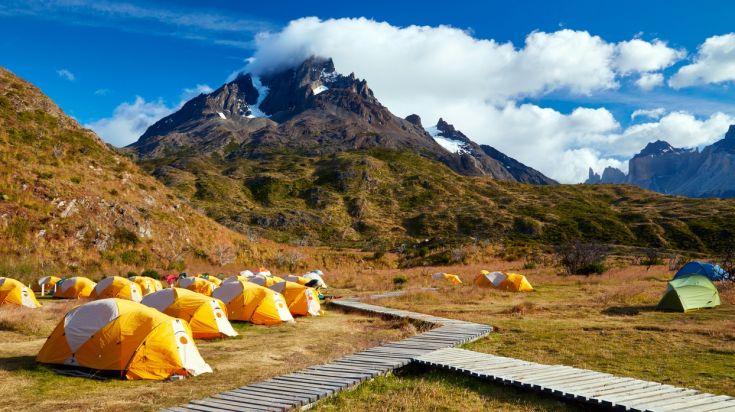
Because tourism in Patagonia is growing, there are now a wide variety of accommodations that run the gamut from basic to luxurious. Camping is the most budget-friendly and can also be the most rewarding in terms of remote locations and stunning views. Hostels are the next step up (hostales) and are preferred by budget travelers, however they aren’t as cheap as you might be used to if you’ve traveled in eastern Europe or Southeast Asia. Additionally, there are 3 & 4-star hotels and lodges if comfort is a priority. Finally, extravagant options exist if you don’t mind shelling out hundreds per night for unique lodging in fancy abodes in spectacular locations.
- Budget: Camping opportunities are plentiful in Patagonia and start as low at USD 10 a day if you bring your own tent and camping gear. Torres del Paine National Park is an excellent place to throw down your spikes and sleep under the stars. If you seek more comfort, hostales are a better bet. You’ll get a simple bed in a shared room and perhaps shared kitchen access. Some, like ‘Casa Perla’ in Puerto Montt, Chile, have dorms starting around USD 18 a night. Bariloche Hostel in Argentina has excellent reviews and start at USD 14 in high season.
- Mid-range: There are plenty of three and four-star hotels in all the major Patagonian destinations. A two-person room in a 3-star hotel in El Calafate, Argentina, range between USD 35 – 85. The popular 3-star ‘Madero Aysen Hotel’ in Chile runs around USD 100 per night.
- Luxury: You may not expect a place as remote and pristine as Patagonia to have indulgent accommodation options, but actually there are quite a few to choose from. Examples in Chile include the spattering of luxury lodges in Torres del Paine like ‘Tierra Patagonia’, a private luxury lodge known for its spa facilities, spacious rooms, excellent food, and stunning views across the Paine Massif. This type of pampering weight heavily on the wallet. A four-night stay in a double occupancy room starts at USD 3,450 per person!
5 Best Day Trips in Chilean Patagonia
There’s certainly no shortage of day trips in Chilean Patagonia. There are so many options, in fact, it could be hard to narrow it down. Here are some of the best day trips you can take from Chilean Patagonia’s most popular hubs.
- Full-day Tour of Torres del Paine allows you to view many of the park’s wonders in one-day by coach from Puerto Natales. It includes exploring Milndon Cave, trekking across Glacier Grey, viewing Sarmiento Lake, and several other highlights.
- Isla Magdalena & Isla Marta Tour from Puerto Natales includes a 45-minute boat ride through the Strait of Magellan to view the wildlife — hundreds of sea lions and the largest colony of Magellanic Penguins in the country can be seen here.
- Whale Watching Day-Trip from Punta Arenas to view humpbacks in Colonane Marine Park via cruise through the Strait of Magellan.
- Coyhaique Nature Reserve Tour includes time spent discovering the city of Aysen as well as heading out of town to see pristine forests, a waterfall, rivers, mountain scenery and take an easy hike through the nature reserve.
- Hike the Las Torres in Torres del Paine National Park starting from the Laguna Amarga. The trail runs for roughly 11 miles to the base of the most iconic site in the park.
*Tours of the Northern Patagonian Ice Field and Cape Horn/Hornos Island are multi-day excursions and not included in this section.
5 Best Day Trip in Argentinian Patagonia
The sprawling region of Argentine Patagonia offers a plethora of day-trips running from the major tourist hot-spots of Ushuaia, Bariloche, El Calafate, and Tierra del Fuego. Here are a few of the best day-trips to take:
- End of the World heritage train from Ushuaia down to the Argentine side of Tierra del Fuego is historic (this train route was used from 1910 – 1947) and offers a front row seat to the remote landscape dotted with waterfalls, rivers, forests, and mountains.
- Horseback Riding Tours in the Argentine Lake District from Bariloche include basic riding techniques and a 2-hour trail ride from the chosen estancia (ranch) through the scenic mountains and lakes of the Andes. Topped off with an authentic lunch prepared at the estancia.
- Full-day Tour of Perito Moreno Glacier from El Calafate includes trekking through Los Glaciares National Park, up-close encounters will multiple glaciers in the park, and a 1-hour boat ride through the glacier lagoon.
- Full-day tour of El Chalten from El Calafate includes trekking to the Condors Viewpoint or Eagles Viewpoint (Mirador de los Condores & Mirador de las Aguilas), viewing Mount Fitz Roy, touring Chorrillo del Salto (natural waterfall), and learning the history of the 19th century La Leona Inn.
- Full-day Hike and Canoe Tour of Tierra del Fuego National Park includes a 3-hour trek, a 1.5-hour canoe paddle across Lapataia Bay, and hours of mountain, river, and lakes vistas.
What to pack
What you bring with you will depend on the types of activities you plan to do (hiking, camping, boat riding, day touring, etc.), but below you will find a general packing list for a Patagonia trip:
- 3 short-sleeved breathable tops
- 2 light-weight fleece jacket/jumper
- a waterproof jacket
- 2 pairs of quick-dry hiking pants
- 1 pair of zip-off pants/shorts
- 2 pairs of hiking shorts
- leggings/thermal underwear
- travel towel
- hat
- thin and thick hiking socks
- sturdy walking/trekking shoes
- slip-on sandals or flip flops
- gloves
- sunscreen
- sunglasses
- dry bag
- universal adaptor
- head torch
- electronic chargers/power bank
- camera
- mini first-aid kit
Visa Details
A Patagonia vacation means visiting both Argentina and Chile. To enter either country, you must make sure you have at least 6 months validity left of your passport.
If you are traveling on an American, Canadian, U.K., or Japanese passport, no visa is required for either country for travel of up to 90 days. Holders of these passports also do not have to pay any fees. The only exception is Australian passport holders who pay for entry to Chile. These conditions apply for most EU passport holders as well, however checking with your individual embassy before the trip is strongly advised. More information
This system allows for easy travel between the two countries as no planning is required for the visa. It’s perfectly acceptable to start in one country and finish in another and it’s quite common to cross the border multiple times either by land on excursions or day trips. Immigration officials are well aware of this and therefore the border crossing is quite straightforward. Additionally, you should be able to receive a visa stamp at nearly every crossing between the two countries. If it’s a more obscure crossing, double check the specific border town online beforehand.
If you don’t have the time to do all the planning and cannot wait for your trip to Patagonia, simply contact our local travel experts for a customized trip. With our select Travel Experts, planning your dream holiday is just a click away.
World-renowned hiking trails, multiple national parks, pristine wilderness, and abundant wildlife put a Patagonia trip high up on the list of best places in the world to visit. Because of the diverse number of things to see and do in Patagonia, it’s possible for almost everyone to enjoy a trip here. However, it’s for the same reason that planning a Patagonia vacation can feel overwhelming. But don’t let this discourage you! With some patience and thought, and our guide above, planning a Patagonia trip is not an impossible task.



